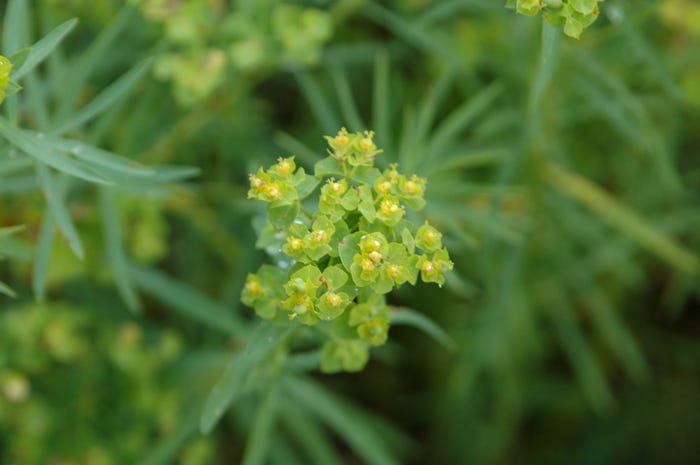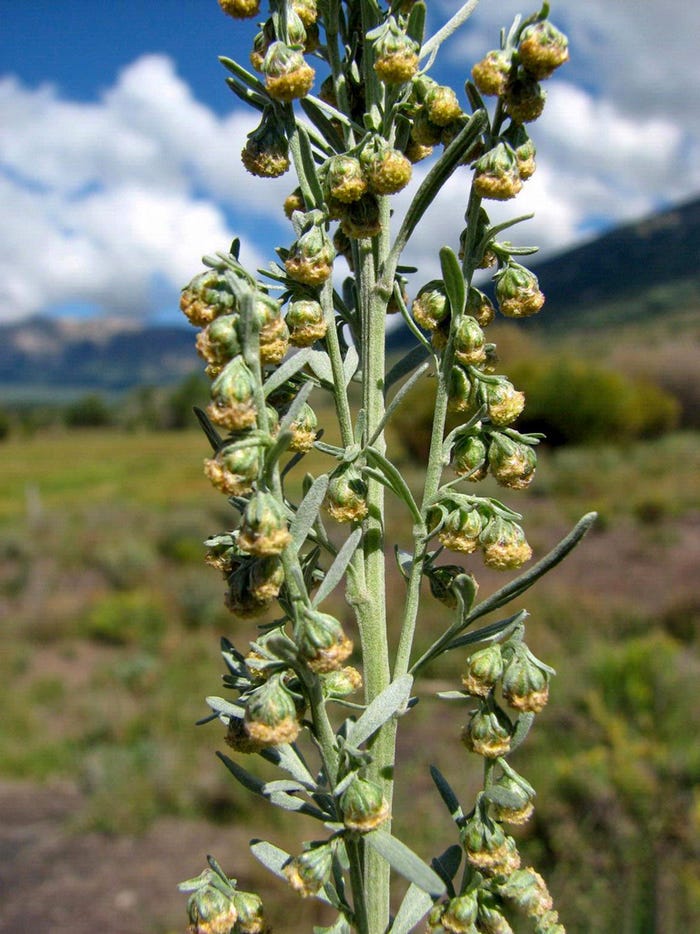June 15, 2020

Canada thistle, leafy spurge and absinth wormwood are three of the most common range and pasture weeds in North Dakota.
Canada thistle infests 800,000 acres; leafy spurge, 750,000 acres; and absinth wormwood, 750,000 acres.
“A number of methods of control are available, including chemical and biological control,” says Kevin Sedivec, North Dakota State University Extension rangeland management specialist. “The right option for you will depend on your location and management goals.”
Suggestions from Extension specialists include:
Canada Thistle
Chemical application offers the greatest control of Canada thistle. Chemicals are most effective when applied at the early bud stage in early summer or at the rosette stage in the fall. Chemicals recommended for use in rangeland and pasture include Tordon (picloram), Banvil (dicamba), dicamba plus diflufenzopyr (Overdrive), Milestone (aminopyralid) and Curtail (clopyralid).
Two new herbicide treatments are Grazonnext HL (Triisopropanolammonium plus aminopyralid plus 2,4-D) and DuraCor (florpyrauxifen-benzyl plus aminopyralid). Both show excellent control of Canada thistle plus other common weeds.
Livestock will graze Canada thistle when it is in the rosette stage but have not been shown to be an effective biocontrol method.
Other biocontrol methods that have not been successful are the introduction of a gall-producing fly, a weevil and the painted lady butterfly.
Leafy spurge
Successful chemical control of leafy spurge is dependent on the proper timing of the application and the herbicide used.
Leafy spurge is most susceptible to chemicals when in the true flower stage; when it is in bloom and seeds are developing, typically in mid-June; or when the stems develop regrowth in early to mid-September.
A number of chemicals can control leafy spurge effectively, but none can eliminate it on rangeland, pasture, Conservation Reserve Program land or roadsides. The best chemical options include Tordon (picloram), Tordon plus 2,4-D and Plateau (imazapic, fall application only).
The most effective treatment based on research conducted at NDSU is a combination of Tordon plus Plateau plus 2,4-D plus MSO adjuvant applied when plants are in the true flower stage (in mid to late June). The combination of Facet L plus Overdrive plus MSO adjuvant also has proven to be an effective chemical combination for leafy spurge control, and it can be used near trees and in areas with sandy soils or high water tables.
 EASILY IDENTIFIED: Leafy spurge is easy to identify by its yellow flowers.
EASILY IDENTIFIED: Leafy spurge is easy to identify by its yellow flowers.

Refer to the “North Dakota Weed Control Guide” for recommended rates and guidelines.
Grazing with sheep or goats is the best biological control for leafy spurge because cattle’s use of leafy spurge is limited. However, livestock that graze on leafy spurge often experience photosensitivity due to the chemicals in the plant.
Flea beetles are another effective biological control option for leafy spurge; however, they are not well adapted for sites with sandy soil conditions.
Absinth wormwood
Chemical control is the only option available now to treat absinth wormwood. Herbicides should be applied when the plant is 1 foot tall and actively growing. Application early in the growing season typically results in poor control.
Recommended herbicides include clopyralid (Stinger, Transline or Curtail), dicamba, Milestone, 2,4-D, Tordon and Roundup (glyphosate). Grazonnnext HL and DuraCor also provide control of absinth wormwood.
 CHEMICAL CONTROL: Absinth wormwood can only be controlled with herbicides.
CHEMICAL CONTROL: Absinth wormwood can only be controlled with herbicides.

“Whenever using a herbicide, always read and follow the label directions,” Sedivec advises. “Roundup is a nonselective herbicide and will damage or kill all vegetation on which it’s applied.”
For more information, consult the “2020 North Dakota Weed Control Guide,” which is available at county Extension offices or online.
Source: NDSU Extension Service, which is solely responsible for the information provided and is wholly owned by the source. Informa Business Media and all its subsidiaries are not responsible for any of the content contained in this information asset.
You May Also Like




